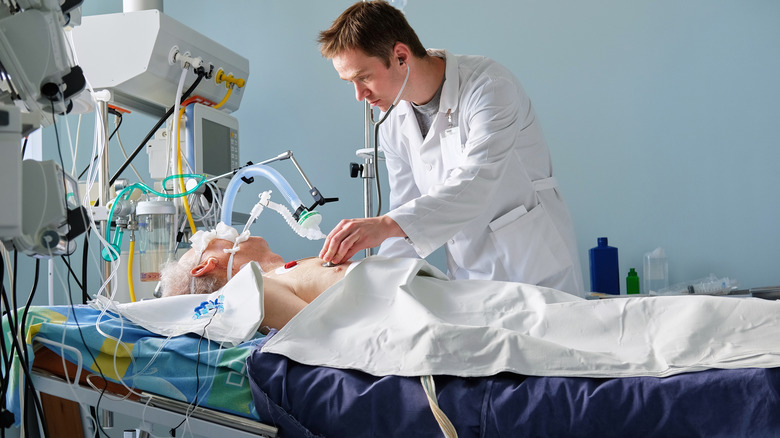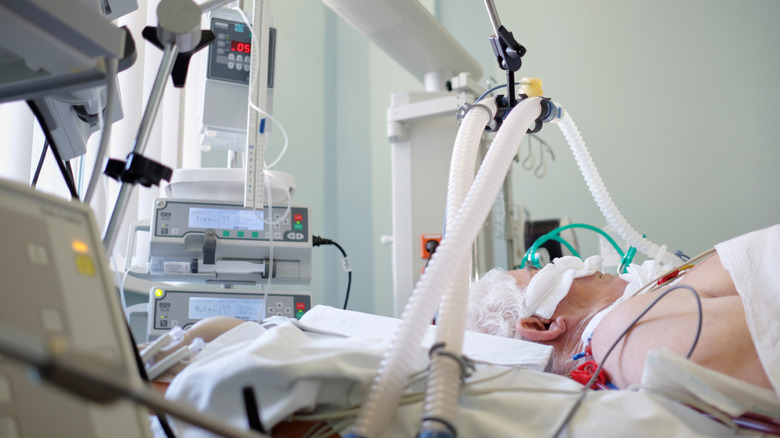Why Do Some Patients Need To Be Intubated?
Intubation is the process of inserting a tube into a patient's airway to help them breathe. It is typically done in a hospital setting when a patient is unable to breathe on their own or when their breathing is impaired (via Cleveland Clinic). According to a 2017 article published in the Journal of Acute Medicine, between 13 and 20 million intubation procedures are conducted annually in the United States. Intubation is typically performed by a healthcare provider, such as a doctor or nurse, who has been trained in the procedure (via Unitek College). Although it is usually done in a hospital, but can also be done in other settings, if necessary.
According to Cleveland Clinic, it's a generally safe and effective way to help patients who are unable to breathe on their own. However, it does carry some risks — such as the risk of infection or injury to the airway, says the clinic. It is important to discuss the potential risks of intubation with a healthcare provider before the procedure is done. A healthcare provider will carefully assess a patient's needs and risks before deciding if intubation is necessary.
What conditions require intubation?
There are several reasons why a patient may need to be intubated. The first is respiratory failure. This occurs when the patient has a condition where they can't breathe alone (via Unitek College). Common conditions include such as pneumonia and obstructive pulmonary disease (COPD, says the college. Someone with airway obstruction might also need intubation. This condition can occur when something is blocking the airway. In addition to the above conditions, people with loss of consciousness might require intubation to help them breathe, as well as those undergoing surgery that'll restrict their breathing.
According to the Cleveland Clinic, one common risk associated with intubation is infection. People who undergo the procedure might develop a sinus infection. There is also a risk of injury to the airway or surrounding tissue during the intubation process. Complications from sedation can also arise. If the patient is given sedatives or anesthetics during the intubation process, there is a risk of complications from the medications, such as an allergic reaction or difficulty waking up.
How is an intubation procedure done?
The general intubation procedure begins with reparation. Before the procedure, the healthcare provider will administer sedatives. The patient will be positioned on their back (via Unitek College). The doctor will then use a laryngoscope, which is a specialized instrument with a light on the end, to visualize the patient's airway, which also aids in the insertion of the flexible plastic tube (via Medical News Today)
An overseeing physical will usually monitor the patient's vital signs, including their oxygen levels, to ensure that the tube is properly positioned and that the patient is breathing adequately, explains Unitek College. The doctor may also suction the patient's airway to remove any secretions that may block the tube. According to Medical News Today, some people might have swallowing difficulty after the procedure. However, they should expect a quick recovery, which often takes anywhere from a few hours to a few days.



